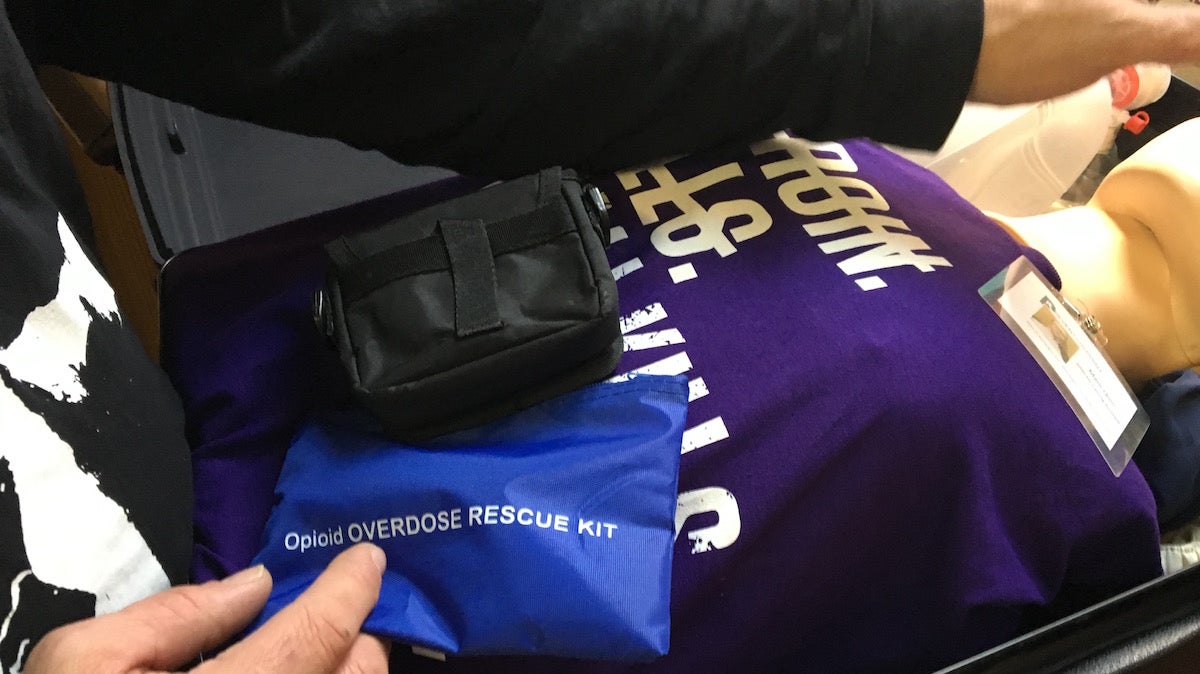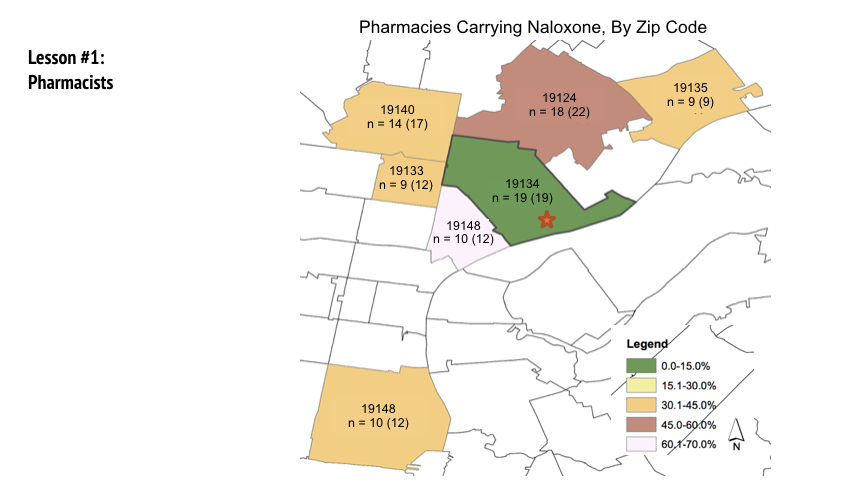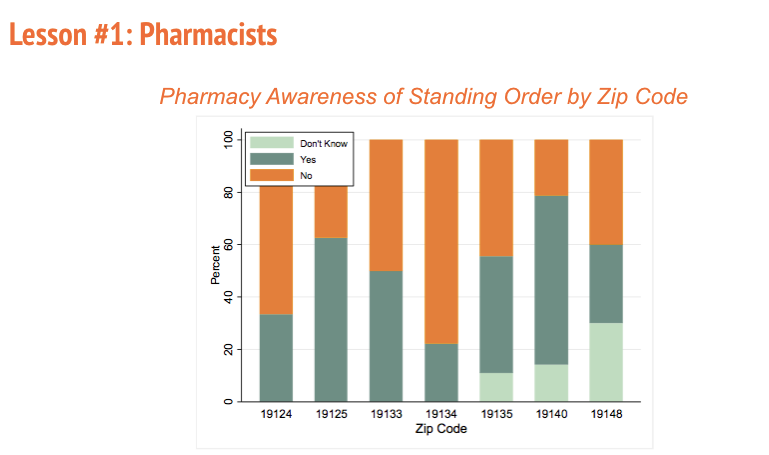Pharmacy survey finds overdose ‘antidote’ hard to get in Philadelphia
Listen
(Elana Gordon/WHYY)
You might call him a Narcan rock star. And his name? Elvis. Elvis Rosado.
“My personal kit is always on my hip,” said Rosado, as he takes out an old camera bag that he has turned into a naloxone rescue kit.
For more than two decades, Rosado has been involved with the nonprofit Prevention Point, which runs several public health initiatives, a shelter and syringe exchange. And as the group’s outreach and education coordinator, Rosado has trained nearly a thousand families around the region this year in how to administer naloxone, sold under the brand name Narcan. That’s in addition to training countless other city workers and community members, from the inner city to the outer burbs.
Rosado’s own kit contains two doses of the naloxone nasal spray, gloves and some face shields for giving people rescue breaths if they’re not breathing.
“Keep in mind, you can go 40 days without food and close to 10 days without water, but you can’t go more than 10 minutes without oxygen,” said Rosado. It’s a point he emphasizes during his trainings, regardless of whether naloxone is available at the time. “The key thing is to check the person’s throat to make sure nothing is lodged, and then do rescue breaths. Two strong breaths every 5 seconds until the ambulance gets there.”
A lifesaving medication
Rosado knows that having naloxone can mean the difference between life and death. It’s a medication that can reverse a potentially fatal overdose, on the spot, so long as it’s administered quickly. With Philadelphia on track to record 900 overdose deaths this year, city and state health leaders are trying to make the medication more widely available.
Many believe fentanyl is partially to blame for the surge in fatalities. The synthetic drug is a lot more potent than heroin, and it’s being mixed into some batches of heroin at lethal levels.
Unfortunately, Rosado said, his own naloxone kit is not just for demonstrations. He has personally used the medication to reverse overdoses more than two dozen times this year.
Rosado and others have been in emergency mode, distributing rescue kits throughout the community. But at about $75 per pack, Prevention Point said its capacity is limited.
Yet, people don’t have to go through Prevention Point or even a doctor’s office to obtain naloxone. They can get it directly from a pharmacy.
New access through pharmacies
In October of 2015, Pennsylvania physician general Dr. Rachel Levine took an unusual step in an effort to make naloxone more accessible. She issued a standing order for all Pennsylvania residents — an open prescription allowing anyone to go to a pharmacy and get naloxone from a pharmacist without a specific doctor’s note. Insurance companies sometimes cover it.
“There are very few other times when a standing order would be present, so I think it’s new for pharmacists,” said Levine.
And the state has been working closely with pharmacy groups to get the word out.
“Since we started that program, our nurses have visited 540 pharmacies statewide to provide education on the standing order,” she said. “And we have found that 56 percent of the pharmacies, or 331 pharmacies, actually carry the naloxone on stock. Others can get it usually within 24 hours when they order it.”
But in Philadelphia, some worry the medication is not so easily available, especially in the areas that need it most.
Limited availability in areas of need
Several months ago, Prevention Point and researchers at the University of Pennsylvania surveyed the pharmacies located in the seven Philly ZIP codes with the highest incidents of overdoses.
 courtesy Prevention Point
courtesy Prevention Point
“Shockingly, most of the pharmacies and pharmacists have no idea about the standing order,” said Jose Benitez, director of Prevention Point.
Just 11 of the 89 pharmacies they contacted had naloxone in stock. Pharmacists in Kensington, the area with the highest number of overdose incidents, had the least awareness of the standing order.
 courtesy Prevention Point
courtesy Prevention Point
As for Rosado, he’s not surprised. He hears from a lot of people at his trainings about their pharmacy experiences.
“People have come in [to the pharmacy] and they’ve gotten everything from, “I can only get it if you have a prescription from a doctor,’ or ‘It has to be specifically for you. I can’t give you something if it’s going to be used on somebody else.'”
Under the standing order, anyone can get naloxone.
Then, there’s the stigma.
“A young lady I trained out in Tioga, the pharmacist said to her, ‘I’m sorry. I didn’t sell you the heroin, I’m not selling you the Narcan,” Rosado recalled her telling him.
Nationwide, CVS and other pharmacies have issued policies that they’ll supply naloxone. But on the ground, the survey found it wasn’t always in stock. Ordering it can take one to two days.
Rosado’s short-term fix is keeping a list of the few places that do carry it, such as Philadelphia Pharmacy. He refers people there. Prevention Point also recently put together education materials for pharmacies, and, when Rosado travels to new towns around the region to conduct trainings, he reaches out to nearby pharmacies in advance.
Still, he worries about whether people are getting the resources they need in time, and he gets nervous about taking a day off, even for the holidays.
“My fear is that the day I decide to take a break, somebody who needed me is not going to have that information, and they’re going to lose somebody,” he says. “It weighs heavy on me.”
WHYY is your source for fact-based, in-depth journalism and information. As a nonprofit organization, we rely on financial support from readers like you. Please give today.

